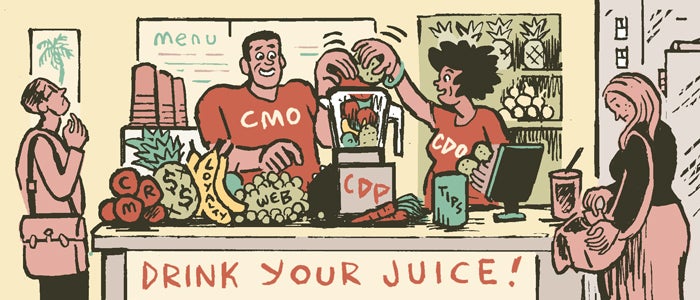What does generative AI have in common with customer data platform (CDP) technology?
Both are represented in Gartner’s most recent hype cycle, with CDPs languishing in the “trough of disillusionment” and generative AI sitting atop the “peak of inflated expectations.”
And this: On Wednesday, CDP startup Amperity released two new generative AI products for marketers that integrate OpenAI’s GPT models with a brand’s own customer data.
One tool is an AI assistant that writes SQL queries, while the other answers questions in natural language – like “Who are my high-value customers who have not made a purchase in 2024?” The tool makes recommendations, such as which products these customers are most likely to buy based on what their pricing sensitivity is or what they previously purchased at the same time last year.
Marketers can then use that information to target customers with personalized offers.
But why do marketers need Amperity when they can go straight to the source: the large language models themselves?
Good data makes a difference
Because generative AI can be a powerful tool for marketers – but it needs the right data.
“Generative AI will enable you to have that conversational experience, but it’s only going to be as good at the knowledge and underlying data that drives it,” said Joyce Gordon, Amperity’s head of generative AI.
Zainub Sareea, VP of product at B2B media company Bobit Business Media, an Amperity client, has experienced the difference good data can make firsthand.
When she previously tried asking ChatGPT to write a specific SQL query, it couldn’t. The only answers it can provide are “generic,” she said.
ChatGPT doesn’t have access to Bobit’s tables, fields, layout and other data, and Sareea doesn’t feel comfortable granting access. But it’s another story with Amperity, she said, because Amperity “allows us to own our data.” Bobit started building a first-party database within Amperity last year to combine multiple customer data sources into unified profiles. It’s also able to engineer its own fields.
With its customer data better organized, Bobit is now using Amperity’s AI assistant to better understand its audiences. The company has more than 40 brands across the automotive, beauty, health and wellness and public safety verticals, and it plans to use Amperity’s generative AI tools to define audience segments, identify content that’s resonating with people and guide its product and sales strategy.
Amperity’s data foundation
Amperity’s new generative AI offerings rest on a bedrock of existing machine learning tools that deliver high-quality data, Gordon said.
Its data aggregation tool, Stitch, integrates data across online and offline customer records, including in-store, social media, customer service and loyalty program interactions, so marketers can have a single, unbroken view of the customer. Its predictive AI analyzes customer data to create audience segments and unearth insights on, for instance, churn, customer lifetime value and product affinity.
When a user asks a question, Amperity passes the client’s customer data, stored in hundreds of tables with thousands of different fields, along with a prompt to Azure OpenAI Service’s GPT models. The SQL query runs and returns a response, which also includes the SQL query itself so that marketers can understand what’s happening “under the hood,” Gordon said.
Amperity chose OpenAI’s GPT models because they’re secure, “enterprise grade” and don’t store any customer data or use it to train their models, she said.
The CDP is experimenting with using GPT-3.5, GPT-4 and GPT-4 Turbo models to generate results. So, what’s been most effective?
“Right now, we’ve seen the best results with GPT-4,” Gordon said. “That might change in the future because these models are evolving so quickly.”


















